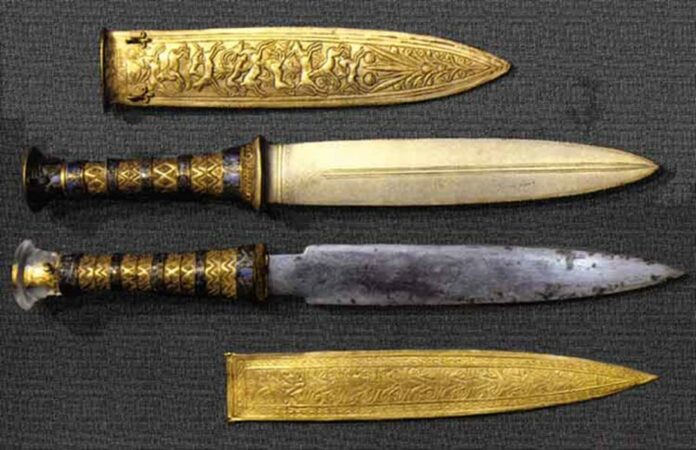The tomb of Tutankhamun, one of Egypt’s most famous pharaohs, has long fascinated historians and archaeologists since its discovery in 1922. The tomb, known as KV62, was unearthed by a team led by Howard Carter in the Valley of the Kings, on the west bank of the Nile near Thebes (modern Luxor). Among the thousands of treasures found within this ancient burial site was a remarkable dagger, which has since intrigued scholars due to its unusual composition. This mysterious artifact, now known as Tutankhamun’s meteoric iron dagger, continues to captivate the world with its origins that are quite literally out of this world.
The Discovery of Tutankhamun’s Tomb
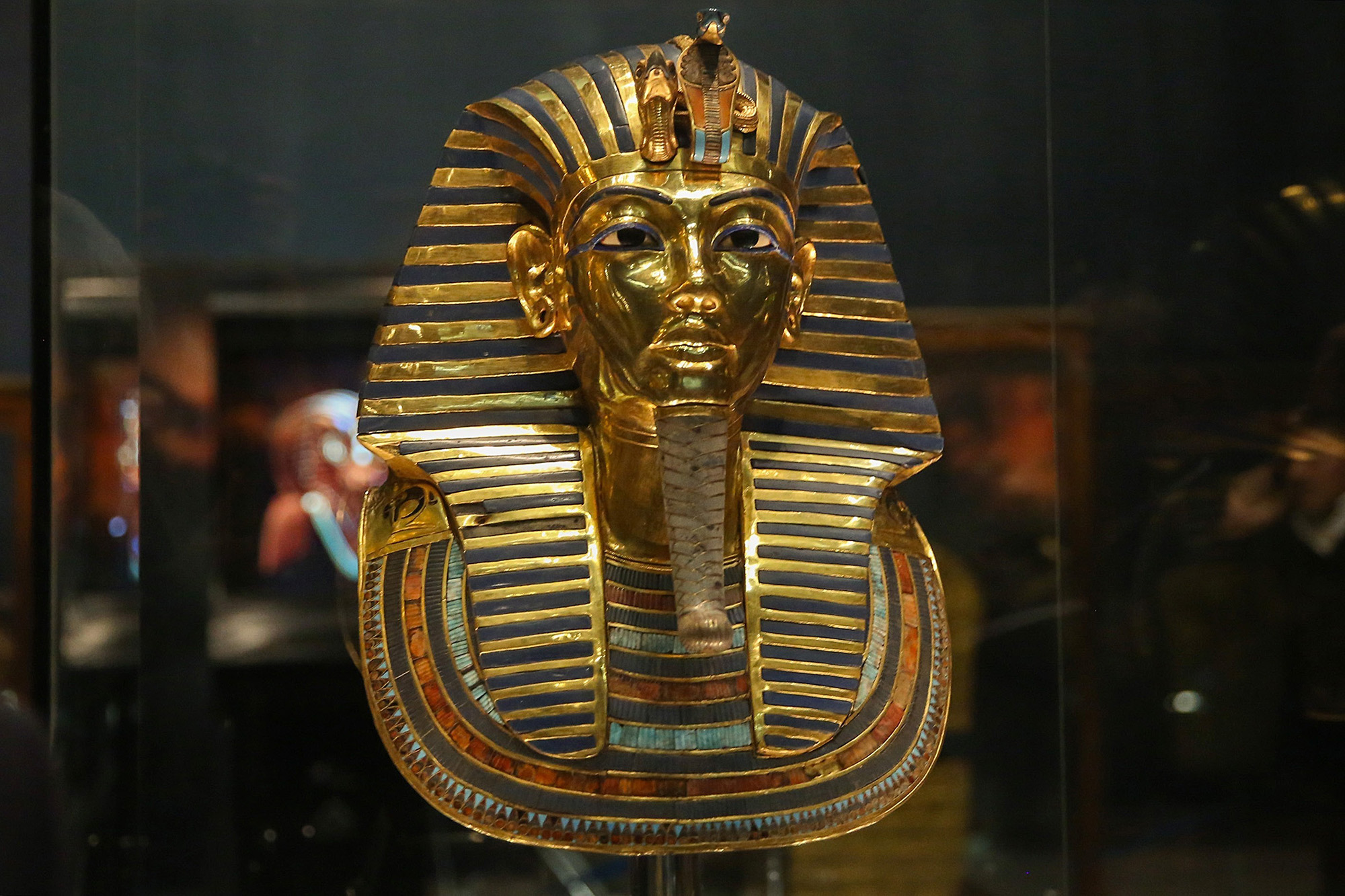
In 1922, Howard Carter and his team made one of the most significant archaeological discoveries of the 20th century: the tomb of Tutankhamun, an Egyptian pharaoh who ruled during the end of the 18th Dynasty. This tomb, buried under debris from the cutting of KV9 for Pharaoh Ramesses V, had remained hidden for over 3,000 years. The tomb contained a staggering 5,398 artifacts, including a solid gold coffin, a face mask, thrones, archery bows, trumpets, and a lotus chalice. Among these treasures was a set of iron blades, including the now-famous iron dagger.
The Significance of the Iron Dagger
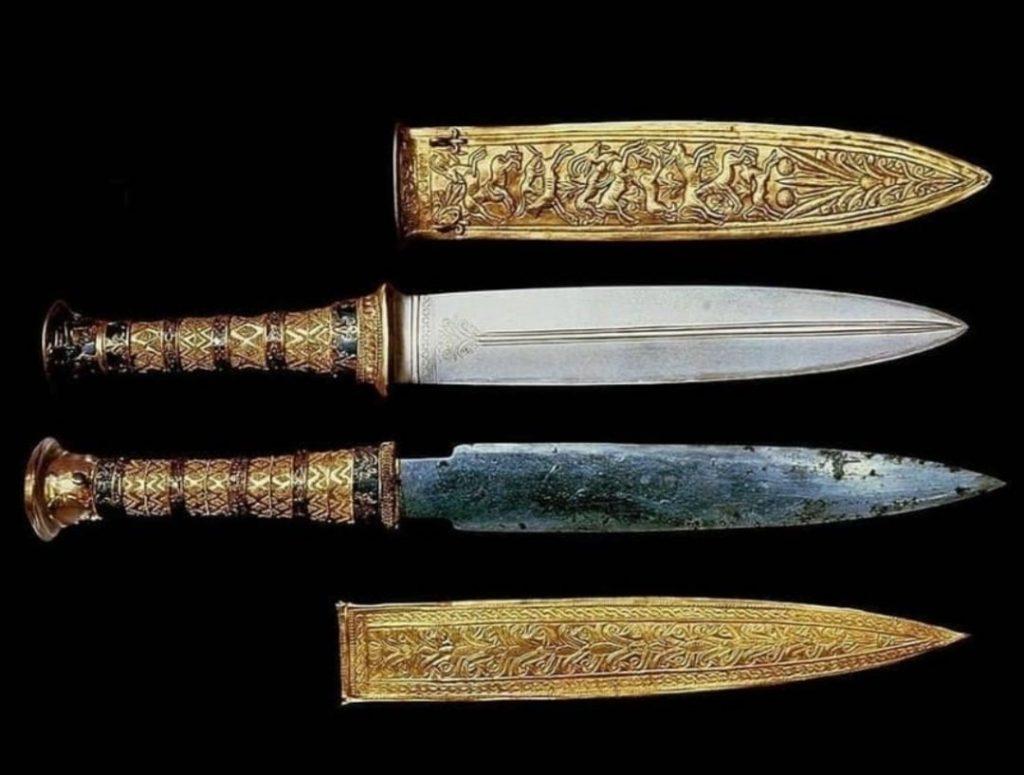
The iron dagger found in Tutankhamun’s tomb was not just any ordinary weapon. It featured an ornamental golden sheath, expertly crafted by an ancient metalsmith. The handle of the dagger was made of fine gold, decorated with cloisonné and granulation work, and finished with a pommel of rock crystal. The golden sheath bore intricate designs, including a floral lily motif on one side and a pattern of feathers ending with a jackal’s head on the other.
Iron objects from the 18th Dynasty are exceedingly rare in Egypt, as the technology to produce high-quality iron was not yet widespread. Most iron artifacts from this period are of low quality, making Tutankhamun’s iron dagger an extraordinary find. The high craftsmanship and the fact that the other blades found in the tomb were relatively crude suggest that this dagger may have been imported, possibly as a royal gift from a neighboring kingdom.
Diplomatic Relations and Iron Gifts
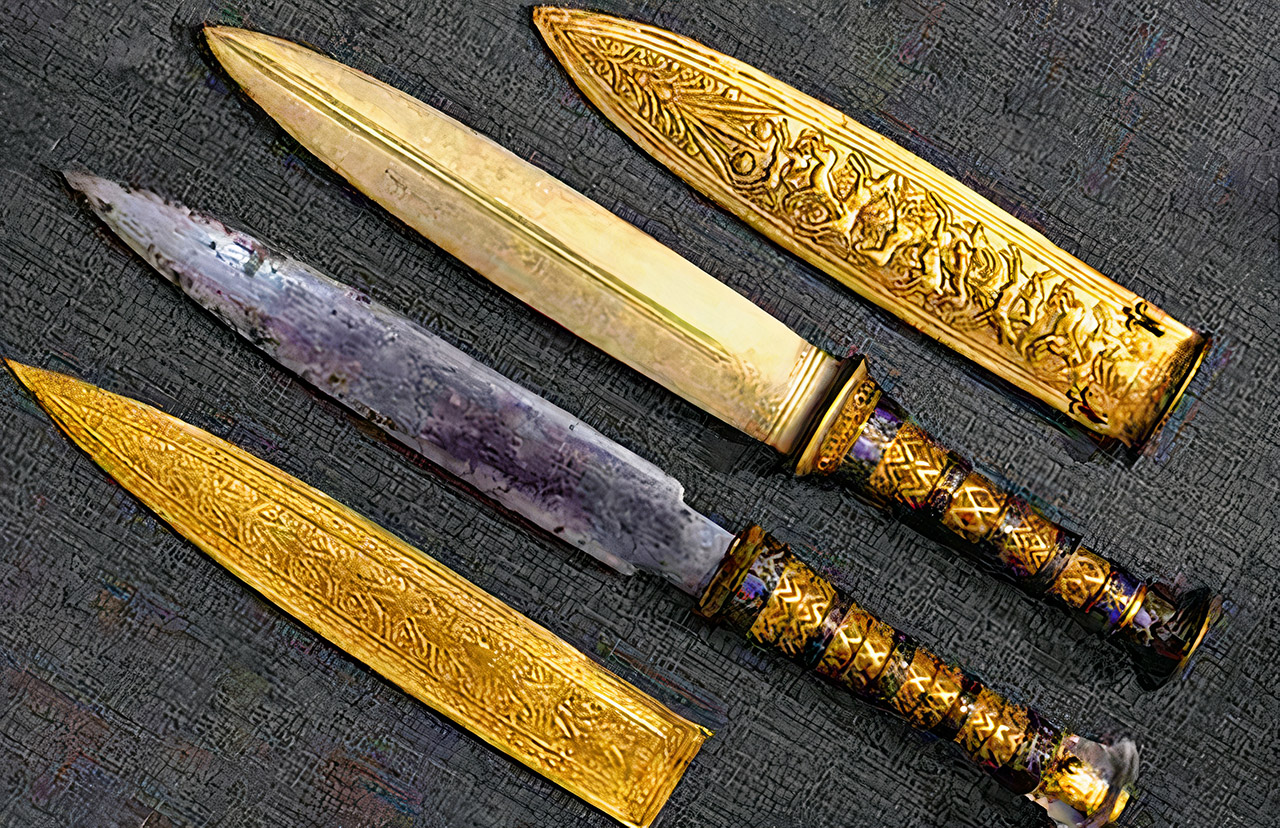
Diplomatic records known as the Amarna letters, dating from the 14th century BC, mention royal gifts of iron given to Egyptian pharaohs before Tutankhamun’s reign. One letter notes that Tushratta, King of Mitanni, sent iron objects to Amenhotep III, who is believed to be Tutankhamun’s grandfather. These records provide clues that the ornamental dagger may have been among the prestigious gifts exchanged between these ancient civilizations.
The Blade’s Meteoric Origins
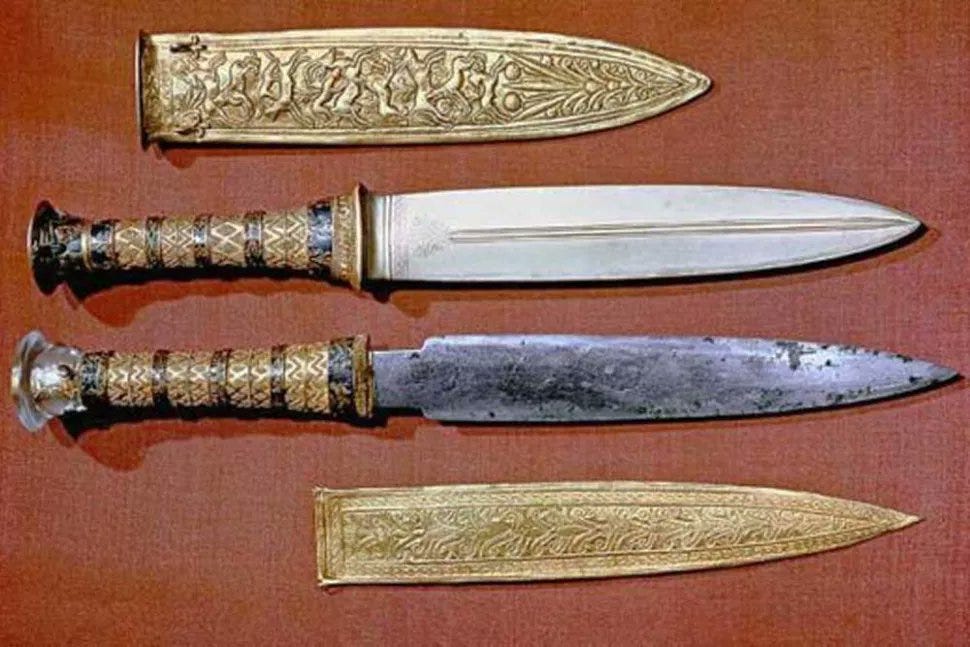
Since the 1960s, researchers have speculated that the iron in Tutankhamun’s dagger might have a meteoric origin due to its high nickel content. This theory was confirmed in a 2016 study using x-ray fluorescence spectrometer analysis. The study revealed that the blade is composed mainly of iron (Fe), with 10.8% nickel (Ni) and 0.58% cobalt (Co), a composition closely matching that of known meteorites. The homogeneity of the metal further supports the idea that the dagger was forged from a meteorite.
Further research published in February 2022 used non-destructive two-dimensional chemical analysis to reinforce this conclusion. The study suggests that the source of the meteorite used to create the dagger was likely octahedrite, one of the most common structural classes of iron meteorites.
Conclusion
The meteoric iron dagger of Tutankhamun is not just a relic of ancient Egyptian craftsmanship but also a testament to the interconnectedness of early civilizations. The dagger’s celestial origins and the advanced techniques used to create it highlight the sophistication and mystery surrounding the reign of Tutankhamun. As researchers continue to uncover the secrets of this remarkable artifact, the dagger serves as a symbol of the enduring legacy of ancient Egypt and its rulers who looked to the heavens, quite literally, for their treasures.
